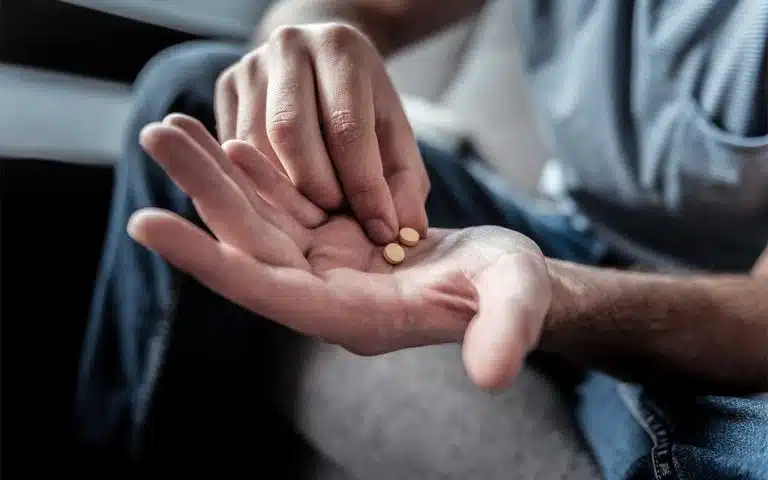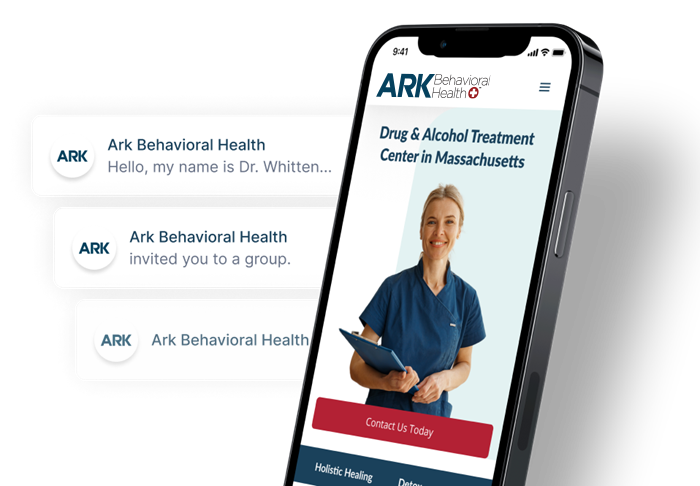Opana (Oxymorphone) Addiction | Abuse Potential, Signs, Withdrawal, & Treatment
- What Is Opana?
- Opana Effects
- Signs Of Opana Addiction
- Opana Withdrawal
- Opana Addiction Treatment
- Frequently Asked Questions

Opana is a brand name opioid analgesic (painkiller) used to treat moderate to severe pain. It is also prescribed under the brand name Oxymorphone Hydrochloride.
Similar to other opioids, Opana has a high risk for abuse, dependence, and addiction. Dependence and addiction increase the risk of a life-threatening overdose and withdrawal syndrome.
If you or a loved one may be addicted to oxymorphone, professional treatment can help you begin to recover.
What Is Oxymorphone?
Oxymorphone is a strong opioid pain reliever that is usually prescribed if other pain medications aren’t sufficient. It is a schedule II controlled substance in the United States, meaning it has a high risk for abuse and dependence.
Opana used to be prescribed in extended-release tablets (Opana ER) but this formulation is no longer available. The Food and Drug Administration (FDA) has requested that the maker of Opana ER, Endo Pharmaceuticals, remove it from the market because of its high risk for abuse.
Opana Effects
Oxymorphone attaches to opioid receptors in your central nervous system (CNS). Once attached, it activates the receptors and increases dopamine levels, which are responsible for the euphoric effects associated with opioids.
Along with its relaxing and pain-relieving effects, Opana can also cause the following side-effects:
- dry mouth
- confusion
- nausea and vomiting
- flushing
- rapid heart rate
- headache
- itching
Opana can also cause serious adverse reactions, including severe confusion, hallucinations, fever, and seizures. If you experience serious side effects, it is important to contact your doctor immediately.
Signs Of Oxymorphone Addiction
As a schedule II controlled substance in the United States, oxymorphone has a high risk for abuse. Long-term use of oxymorphone may also increase your tolerance to the drug. Drug abuse is dangerous because it can lead to health complications, overdose, and addiction.
Addiction is a serious disease that is affected by many different factors, including genetics, environment, and mental health. Addiction can affect anyone, even when you are prescribed medication.
Being aware of the following signs of substance abuse may help you or a loved one:
- compulsively taking oxymorphone
- taking oxymorphone in a way other than how it was prescribed
- taking increasingly higher amounts of oxymorphone
- having intense cravings for oxymorphone
- continuing to take oxymorphone despite negative consequences
- losing interest in other activities
Opana Overdose
Opana and other opioids slow the central nervous system and can cause respiratory depression (slow breathing). If you take high doses or combine oxymorphone with other drugs, you put yourself at risk for a potentially fatal overdose.
If you notice any of the following signs of opioid overdose, seek medical attention immediately:
- difficulty breathing
- bluish skin
- clammy skin
- limp muscles
- extreme drowsiness
- slowed heart rate
- unresponsiveness
Opana Withdrawal
If you suddenly stop or rapidly decrease the amount of oxymorphone you take, it may result in withdrawal symptoms. Detoxing from opioids “cold turkey” may be possible but it increases the risk of returning to drugs and possibly overdosing.
If you want to stop taking Opana, medical detox can safely ease you through the uncomfortable withdrawal process.
Opioid withdrawal symptoms may include:
- restlessness
- runny nose
- sweating
- chills
- muscle or joint pain
- irritability
- anxiety
- problems sleeping
- nausea
- vomiting
- diarrhea
- rapid heart rate
The severity of withdrawal may depend on how long and how frequently you used Opana. Along with these symptoms, you may also experience cravings to use oxymorphone.
Oxymorphone Addiction Treatment
There are a variety of services available for Opana addiction but it is important to know everyone experiences addiction differently. A healthcare professional will likely develop a personalized treatment plan that best fits your specific needs.
An addiction treatment plan may include:
Medication-Assisted Treatment (MAT)
MAT combines medication, like buprenorphine or methadone, with therapy for an effective approach to treating opioid addiction. The FDA-approved medications offered through MAT can help lower cravings and reduce withdrawal symptoms.
Residential/Inpatient Treatment
Residential treatment incorporates many services and removes you from environments you may associate with your addiction. These highly structured programs likely offer group therapy, individual counseling, and healthy activities.
Outpatient Program
Outpatient programs are convenient because they allow you to live at home and travel to scheduled treatment sessions. These programs are beneficial if you have already completed an inpatient rehab and/or have a solid support system at home.
Support Groups
You may be introduced to support groups during inpatient treatment and may be an effective addition to your treatment plan. Narcotics Anonymous and other 12-step programs offer support from like-minded peers who are focused on recovery.
For more information on opioid addiction treatment options, please contact us today to connect with a specialist.
Frequently Asked Questions About Opana
Can You Inject Opana?
While it is possible to inject Opana ER and abuse it in this way, it is not recommended due to the high potential of overdose and loss of life. By injecting oxymorphone into your system, the body becomes at risk for various complications to the sedative effects of the drug.
Learn more about Injecting Oxymorphone
How Long Does Oxymorphone Stay In Your System?
Oxymorphone has a half-life of around nine hours, is eliminated from the body in about two days, and is detectible in urine tests for up to four days.
To learn more, read How Long Does Oxymorphone Stay In Your System?
Can You Get High On Oxymorphone?
If oxymorphone is taken in high enough doses, it can get you high and make you feel a kind of euphoria. When people try to chase this high, that’s when abuse and addiction can occur.
To learn more, read What Does An Oxymorphone High Feel Like?
What Happens When You Snort Opana?
Snorting Opana can lead to increased opioid analgesic effects, including numbness, sedation, drowsiness, and respiratory depression. Snorting Opana over long periods of time can also lead to physical dependence, opioid addiction, and other long-term effects.
Learn more about Snorting Opana
What Does Oxymorphone Look Like?
Oxymorphone comes in tablet form. The shape and color of the tablet depends on the dosage and manufacturer.
Some popular forms of oxymorphone include:
- an oval, blue 5mg tablet with “93 O1” stamped on one side
- a round, gray 7.5mg tablet with “G75” stamped on one side
- a round, red 10mg tablet with “E795” stamped on one side and “10” on the other side
To learn more, read What Does Oxymorphone Look Like?
Is It Safe To Drink Alcohol On Opana?
No, it is not safe to drink alcohol on Opana (oxymorphone). Mixing the two substances can cause an opioid overdose, which can be fatal. The FDA warns against drinking alcohol while on opioids, including Opana.
Learn more about Mixing Alcohol & Oxymorphone
Written by Ark Behavioral Health Editorial Team
©2024 Ark National Holdings, LLC. | All Rights Reserved.
This page does not provide medical advice.
Food and Drug Administration (FDA) - FDA Requests Removal of Opana ER For Risks Related To Abuse
MedlinePlus - Oxymorphone
National Library of Medicine - Oxymorphone Extended-Release Tablets (Opana ER) For the Management of Chronic Pain
Dailymed - Opana (oxymorphone hydrochloride tablet)

Questions About Treatment?
Ark Behavioral Health offers 100% confidential substance abuse assessment and treatment placement tailored to your individual needs. Achieve long-term recovery.
100% confidential. We respect your privacy.
Prefer Texting?
Our friendly support team is here to chat 24/7. Opt out any time.







 Learn More
Learn More








